Perhaps the most common questions about snakes revolve around snakes in and around the home. Many people are frightened by the sudden appearance of a snake on their property. Others are not frightened but are curious about the reasons snakes may cross a yard or even enter a home. This article will shed some light on snake behavior and our response to that behavior.
The first thing I want to cover is the nature of wildlife. People, after seeing a snake in their yard, often ask “why is the snake here?“, as if somehow the snake is not supposed to be there. These same people don’t think twice about fox, owls, hawks, deer, rabbits, etc. that may also appear in yards, farmland, etc. Snakes are part of the ecosystem just like any other wild animal, and, as man continues to destroy natural areas, snakes are being pushed closer and closer to human habitation. The reality is that snakes can be quite common around homes. The point is, it is completely normal for a snake to be in your yard, even if you’ve never seen one before.
Of course, not every yard is going to have snakes. Many areas are so built up and so much habitat has been destroyed that you are likely to never see a snake.
What Snakes Want
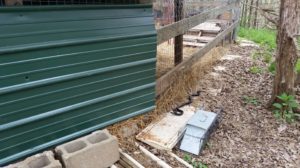
So, why is that snake in your yard (or maybe in your house), anyway?
Shelter
If your yard is full of clutter ; piles of cinder blocks, bricks, plywood,etc. you have created the perfect shelter for a myriad of wild animals. As we discussed earlier, this includes snakes. If your yard has heavy vegetation, stands of trees, natural rock formations, a water source, areas of loose soil, leaf litter, a mulch pile, a sawdust pile, etc. you have provided the perfect shelter for snakes. Keep in mind that these forms of shelter can also be a great place for snakes to lay eggs or give birth, as well as spend the winter.
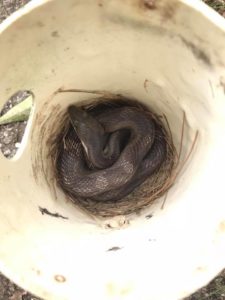
Food
This often goes hand-in-hand with shelter. If you prove the shelter, you also provide a place for snake prey to live. Rodents are the big one ; rats, mice, voles, etc. There are native rodents which stay outside, as well as invasive rodents that will live in your home. Snakes follow scent trails, so if rodents are living in and around your house, you will eventually have snakes. A water source which houses amphibians and fish will attract snakes. A garden attracts insects which can also bring in certain species of snake. If you keep poultry, you will likely have snakes which are after the rodents which nest in the coops, but also eggs. Snakes will also raid bird nest boxes for nestlings and eggs.
Water
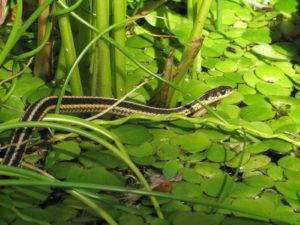
All living things need water to survive. As we touched upon earlier, if you have a water source, natural or artificial, you will likely attract snakes at some point. Objects that collect rainwater can also attract snakes looking for a drink.
What Should I Do?
This is usually the follow up question. I should clarify that I’ve talked to people on all areas of the spectrum ; From the freaked-out homeowner who is about have a heart attack, to the person who is overjoyed to have snakes living on the property. Let’s go over some realistic options.
Do Nothing
Many people coexist with wild snakes on their property and have no issue. Snakes are an important part of the ecosystem, providing free pest control, and also by serving as a prey item for other animals. In most cases I am involved with there is no good reason to relocate snakes from a yard or property, and, after some education, the homeowner realizes this.
Have the snakes Relocated
Fear can be paralyzing, especially when it comes to snakes. Some people are so scared that they see no other option but to have the snakes “removed” from their property. Many people seek out help through a local wildlife removal company, or a nature center who has staff members willing to relocate snakes. Some people do handle and relocate snakes themselves, which is a topic to be covered in a future article. Relocating snakes a short distance is really only a temporary solution. Snakes have home ranges which they travel in a loop throughout the season ; this means your property is likely a part of that loop and the snakes natural instinct drives them to return. Some snakes seem to do well after being relocated, and some do not, often dying on roads trying to find their “home”. Relocation is often highly frustrating for the homeowner who believes the snakes will never return.
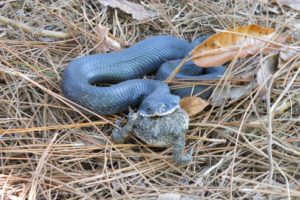
Clean Up and Home Improvements
Remember how I mentioned that a messy yard can attract snakes? If you remove the clutter you use for shelter, you force many of those snakes to seek shelter elsewhere. Keeping your lawn trimmed, cleaning up brush and compost piles, removing excessive vegetation, etc. can also help to cut down on snake visits. For those who keep poultry, invest in hardware cloth and construct a snake-proof enclosure for your birds (please join the Pro-snake Poultry Group for more information). Snakes can sometimes use concrete foundations as a spot to spend the winter. Gartersnakes (Thamnophis sp.) are well known for this behavior. Seal up / replace any foundation you think may allow entry. This also goes for your barns, attics, crawlspaces, windows, etc. Keep in mind that you can never keep all snakes away permanently and I discourage educators from giving the impression that this is possible.
What about venomous snakes?
I’m sure many of you reading this article have this question in mind. This is a problematic area for educators, homeowners, and snakes alike. The fear of venomous snakes is strong and the first instinct is often to immediately kill any venomous snake. Before you jump to that conclusion let’s go over a few things. First, venomous snakes are just as likely to show up in your yard as any other snake if you live within their range. Being concerned about venomous snakes in the yard is understandable for a variety of reasons. People with children and dogs are the people I usually hear from the most. So, you are probably asking what should I do? First, it is entirely possible to coexist with venomous snakes. Plenty of people do it and bites are non-existent because they have educated themselves on the subject and take common sense precautions. Please keep in mind that approaching or touching a venomous snake in order to kill it puts you at greater risk for getting bit.
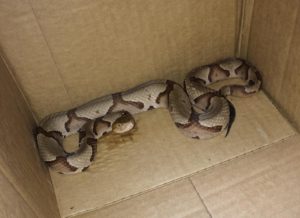
Be Aware
If you are in a situation where venomous snakes are living on or visiting your property, learning how to identify those species is a smart move. You may want to consider taking it a step further and learn the behavior of these snakes. Doing so will help you understand why and when the snakes will show up, where they may be hiding, and what they may be seeking.
Children
I’m not a parent and I don’t claim to be a parenting expert. However, I do give presentations about snakes and children are very open and willing to learn anything I have to teach them. If you do have venomous snakes on your property it is extremely important that children know that snakes should be watched from a distance and never touched or picked up. They should be alerting an adult whenever they see a snake. They should not be putting their hands and feet in holes, rock crevices, or flipping over logs or rocks. Be proactive ; take your children around your yard / property and show them areas where snakes might be. If they are old enough to understand, go over the venomous snakes in your area. Get a field guide for the family to look through. Show them photos online. Sit down with them and look through the facebook group every day. Eventually, they will start to recognize the different species (and so will you). Seek out someone locally who would be willing to come move a venomous snake short-distance. Consider joining Snake Removal & Relocation Nationwide Network on facebook. Like I said earlier, the human / venomous snake issue is never easy to deal with. There are no easy answers. The truth is that there are so many other, far more dangerous, threats to children than the statistically rare event of a snakebite, but many tend to ignore those real dangers and focus on the one time they saw a copperhead in the yard. For a realistic viewpoint on this subject, I recommend Dr. David Steen’s excellent article.
Pets / Livestock
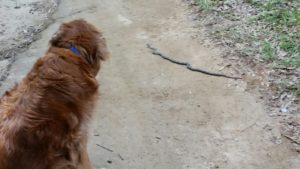 This is often a heated and emotional subject. Just as with children, there is often not an easy answer but the realistic approach is similar to what I outlined in the previous section ; Be aware of and learn to identify the venomous snakes that live in your area, do your best to make your property unattractive to snakes, and remain vigilant when your pets are roaming free. Keep your vet informed about the possibility of a venomous snakebite. I recommend joining the facebook group, National Snakebite Support, where a qualified veterinarian can answer any questions you may have (this is not a substitute for immediate treatment). This applies to not only dogs but all manner of pets, including horses, cattle, and other livestock. As far as dogs are concerned, snake avoidance training is gaining popularity. I recommend seeking out a trainer if you have dogs and venomous snakes in the yard, or other areas where you might bring your dogs for a hike. Having a pet bitten by a venomous snake is never a great experience, but killing snakes out of revenge is just silly, doesn’t improve the situation, and doesn’t make your pets any safer. Common sense and being knowledgeable and proactive goes a long way.
This is often a heated and emotional subject. Just as with children, there is often not an easy answer but the realistic approach is similar to what I outlined in the previous section ; Be aware of and learn to identify the venomous snakes that live in your area, do your best to make your property unattractive to snakes, and remain vigilant when your pets are roaming free. Keep your vet informed about the possibility of a venomous snakebite. I recommend joining the facebook group, National Snakebite Support, where a qualified veterinarian can answer any questions you may have (this is not a substitute for immediate treatment). This applies to not only dogs but all manner of pets, including horses, cattle, and other livestock. As far as dogs are concerned, snake avoidance training is gaining popularity. I recommend seeking out a trainer if you have dogs and venomous snakes in the yard, or other areas where you might bring your dogs for a hike. Having a pet bitten by a venomous snake is never a great experience, but killing snakes out of revenge is just silly, doesn’t improve the situation, and doesn’t make your pets any safer. Common sense and being knowledgeable and proactive goes a long way.
But, what about repellents?
I could fill several pages about the old wive’s tales about mothballs, gasoline, bleach, lemon peel, garlic, essential oils, and dozens of other “snake repellents” that people swear by and continue to promote and suggest. The cold, hard truth about repellents is that they don’t work, and they have been scientifically proven not to work. Despite this, many hard-headed folks refuse to believe the facts, continue to spout misinformation, and cling desperately to myths and “Old Wive’s Tales”. Please do not waste your money and time on these, which include “Snake-A-Way” and other similar products. Things like mothballs and gasoline can poison pets and people and are illegal to dump in your yard and into the environment.
Fencing
“Snake Proof” fencing is an excellent option for the safety of both snake and human. There are several online videos and websites offering installation and 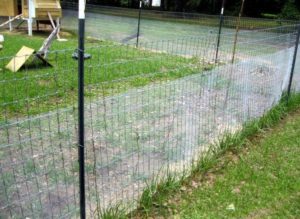 instructions. This fencing is a great investment if you just cannot fathom having venomous snakes in your yard. Please keep in mind that this fencing will not prevent all snakes from entering, especially climbing experts like ratsnakes, cornsnakes, racers, and others. Venomous pit vipers are not the greatest of climbers (they do climb occasionally) but most will choose to crawl the perimeter of a fence and not attempt to climb over. Here’s an informative page from Rattlesnake Solutions out of Arizona.
instructions. This fencing is a great investment if you just cannot fathom having venomous snakes in your yard. Please keep in mind that this fencing will not prevent all snakes from entering, especially climbing experts like ratsnakes, cornsnakes, racers, and others. Venomous pit vipers are not the greatest of climbers (they do climb occasionally) but most will choose to crawl the perimeter of a fence and not attempt to climb over. Here’s an informative page from Rattlesnake Solutions out of Arizona.
Snake Fence Installation
What if someone is bitten by a venomous snake?
Get to a hospital ASAP. Simple as that. This is covered in more detail in Dr. Spencer Greene’s Pre-hospital Snakebite Management article.
Choose your location wisely
This often goes unmentioned, but if you have a fear of venomous snakes, you might want to consider not living in an area densely populated with venomous snakes. If you already do, you might consider moving. Do your research beforehand. Of course, not everyone can choose where they live, but if you are constantly living in fear and constantly stressed out you might want to consider a change. On a personal note, I find it perplexing when people move out into the country and edges of swamps and forests and then spend their lives trying to prevent snakes and other wildlife from entering their yard and property.
Final Thoughts
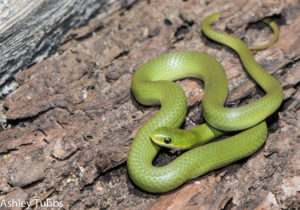
There is nothing you can ever do to keep snakes out of your yard permanently. I hope this article has helped you in some way. I do realize that not everyone can get past the idea of snakes living in their yard, but spending your precious time trying to figure out a way to keep them out permanently is a terrible way to live. Killing every snake you see is a fruitless endeavor. As this article has proven, there are much more realistic options. Please join us in our Facebook group, Wild Snakes : Education & Discussion if you have questions about this article.
Snakes are fascinating creatures! Having them living on your property can be a rewarding and educational experience, especially for children. Please take the time to learn the snakes native to your area. In most areas of the United States, non-venomous snakes will be much more common than venomous species. All creatures deserve to live and have an important role in the ecosystem. Snakes are no exception. Live and let live.